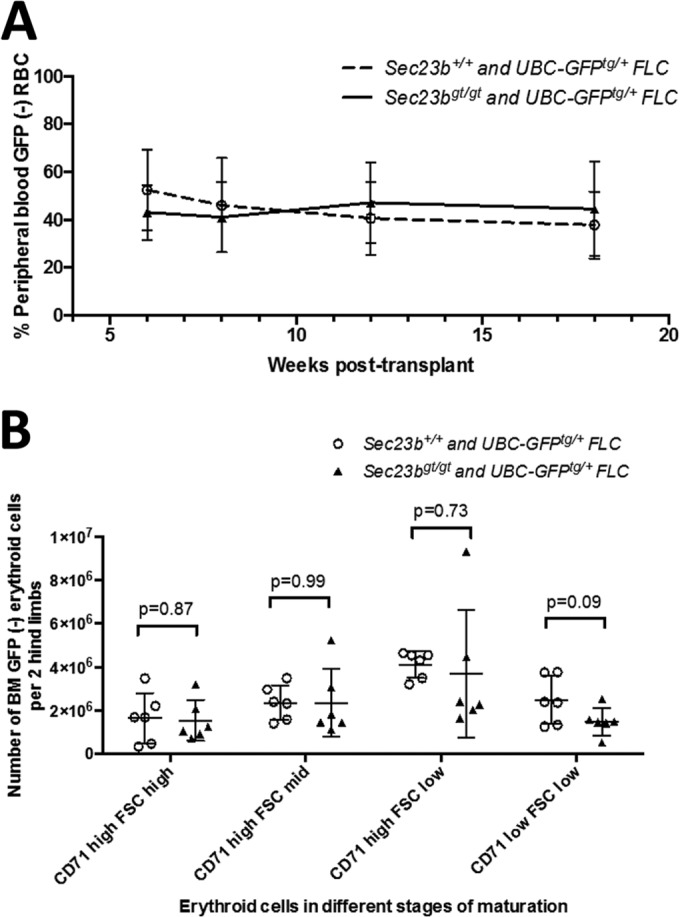FIG 5.

Sec23bgt/gt FLC do not exhibit a competitive disadvantage at reconstituting erythropoiesis compared to WT FLC. C57BL/6J mice were cotransplanted with a 1:1 mix of GFP− Sec23bgt/gt FLC and UBC-GFPTg+ Sec23b+/+ FLC in a competitive transplant assay (experimental arm). Following engraftment, the percentage of GFP− cells in the peripheral blood/BM of recipient mice indicated the percentage of cells derived from Sec23bgt/gt FLC. Control mice were cotransplanted with a 1:1 mix of WT GFP− and GFPTg+ Sec23b+/+ FLC. (A) By peripheral blood FACS, Ter119+ RBC were determined to be derived from both Sec23bgt/gt and WT FLC. Sec23bgt/gt RBC persisted at a stable level throughout the 18-week follow-up period, suggesting no competitive advantage to WT FLC over Sec23bgt/gt FLC at reconstituting erythropoiesis. (B) In the BM, the contribution of GFP− Sec23bgt/gt cells to the populations of Ter119+ erythroid precursors was equivalent to the contribution of the GFP− WT cells in the control arm. Erythroid cells were further stratified by forward scatter and CD71 expression, to identify more primitive progenitors as larger cells expressing higher levels of CD71, more mature smaller cells with lower expression of CD71, and intermediate cells. Sec23bgt/gt cells contributed to all subsets of erythroid cells.
